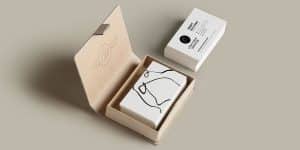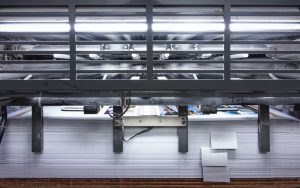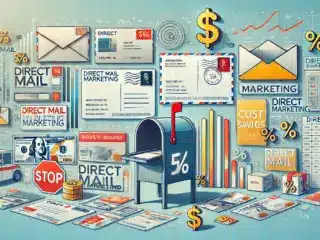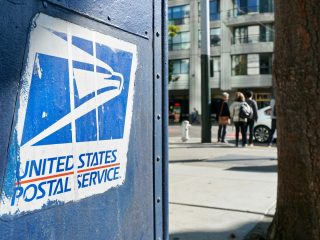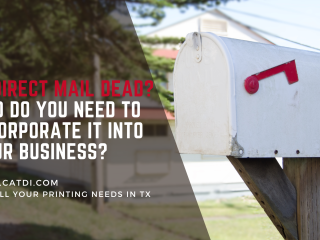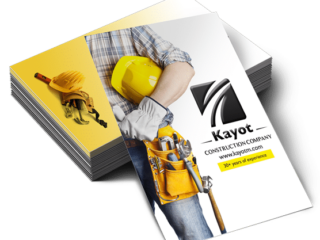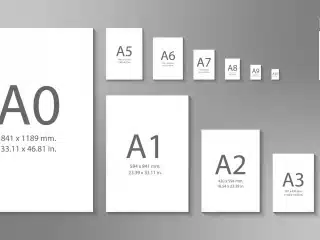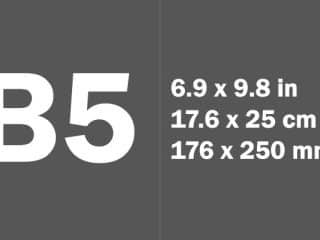Last Updated on October 3, 2023 by Carlos Alonso
You’ve launched a fantastic product. But soon, complaints start pouring in. Some customers receive damaged items. Others feel the packaging doesn’t reflect the quality of your brand—some voice out their disappointment on public platforms. Moreover, you’re incurring unexpected shipping costs.
Packaging problems can hurt businesses deeply. They can tarnish reputations, reduce repeat purchases, and eat into your profits. Yet, these challenges aren’t new. Companies worldwide struggle with similar issues. Even though the solution seems simple, many businesses overlook it. They fail to realize the power of custom packaging.
This guide dives into the world of custom packaging. From its design to its final delivery, you’ll grasp the importance of customized packaging. By making small changes, you can set on the path to better brand representation and happier customers. After all, first impressions do count.
- Understanding The Basics Of Custom Packaging
Custom packaging isn’t just a box or bag. It’s a tailored solution designed to fit your product perfectly. Created with your brand in mind, it resonates with your audience. Each element, from size to design, gets crafted based on specific needs.
In today’s market, standing out is vital. A sea of competitors awaits at every turn. Custom packaging offers an edge. It allows your product to shine in crowded marketplaces. But it’s not just about aesthetics. Proper packaging can increase sales and bolster customer loyalty.
Not all products are the same, and neither are their packaging needs. With the growing popularity and legalization of cannabis, many businesses ask, “What Is the Best Custom Packaging for Cannabis?” The need for compliant yet attractive packaging emerges as regulations dictate specific packaging requirements. Custom packaging isn’t just about brand visibility or protection during shipping but also about meeting industry-specific standards while appealing to consumers.
The advantages of custom packaging stretch far and wide. First, it boosts brand visibility. A unique design grabs attention. It tells a story, making an emotional connection with consumers.
Next, it elevates the customer experience. Opening a well-designed package can be a memorable event. It adds value, turning a simple purchase into a special moment.
Lastly, it’s about protection. Tailored packaging ensures your product remains safe during transit: no more damaged goods or upset customers. Instead, you’ll offer a seamless, delightful experience from start to finish.
- Designing Your Custom Packaging
Embarking on a custom packaging design journey is intricate. For instance, consider the trend of partnering with a custom printed stand up pouch manufacturer. This innovative packaging solution not only ensures products stand out on shelves but also aligns with consumer needs for convenience and aesthetics. By understanding product specifics and audience preferences, like the growing appeal of such pouches, you set the foundation for brand success.
- Analyzing Your Product
Begin with your product. Know its dimensions. Understand its weight. Identify any fragility factors. These elements dictate the design’s structure. A heavy product needs a sturdy base. Fragile items require cushioning and protection. Always tailor your packaging to these specifics.
- Researching Your Audience
Your audience’s preferences matter. Dive into their likes and dislikes. Some adore eco-friendly, sustainable choices. Others lean toward luxury and elegance. Many prefer simple, minimalist designs. Match your packaging to these tastes. Doing so can drive both brand loyalty and sales.
- Sketching And Prototyping
Don’t rush into production. Start with sketches. Visualize your ideas. Once satisfied, move to prototyping. Crafting a physical mock-up offers clarity. It helps you see how the final product will look and feel. It’s an essential step to prevent costly mistakes down the line.
- Seeking Feedback
Once your prototype is ready, get feedback. Share it with team members, potential customers, or experts in the field. Listen to their insights. They might offer invaluable suggestions. Taking feedback seriously can refine your design. It ensures the end product aligns with both brand values and customer expectations.
Efficient design is a blend of product analysis, audience research, and feedback implementation. This trio ensures your product packaging stands out and resonates.
- Selecting The Right Materials
Materials matter immensely in packaging. Balancing durability with aesthetics while factoring in environmental concerns elevates product presentation.
- Durability Vs. Cost
Choosing materials isn’t simple. It’s a balancing act. Durability is vital. No one wants products damaged before they reach customers. But there’s a catch. High-quality materials come at a price. So, you’ll need to find that sweet spot. Strive for durability without breaking the bank. It’ll ensure your products remain safe without inflating costs.
- Environmental Considerations
The planet’s health matters. Consumers notice businesses that care. That’s why many companies now choose green materials. Biodegradable options leave minimal footprints. Recyclable materials can be repurposed, reducing waste. Incorporating these choices isn’t just good for Earth. It can also enhance your brand’s reputation and appeal.
- Sensory Appeal
Packaging is an experience. It’s not just about sight. Touch plays a role too. Consider how materials feel in hand. A smooth, premium texture can convey luxury. A rough, organic touch might suggest eco-friendliness. Always aim for materials that resonate with your brand image. Remember, the right material can elevate the unboxing moment, creating lasting memories for your customers.
A perfect material choice prioritizes product safety, environmental responsibility, and an unforgettable tactile experience for the consumer.
- Collaborating With Manufacturers
Finding the right manufacturing partner is pivotal. Ensuring open communication and alignment with your vision results in packaging that truly represents your brand.
- Researching Credible Vendors
Not all manufacturers are equal. Some excel in quality. Others are known for reliability. It’s crucial to find partners who offer both. Dive deep into reviews and ratings. Seek out recommendations. Prioritize vendors known for consistency. In the long run, a reliable partner saves both time and money.
- Communicating Your Needs
Clear communication is vital. Manufacturers aren’t mind readers. Share your vision in detail. Use sketches, prototypes, or even mood boards. Make sure they grasp your brand essence and marketing needs. Regular check-ins can help. They ensure that the final product matches your expectations. Remember, it’s a two-way street. Value their expertise and feedback. Together, you can create packaging that’s both functional and fantastic.
- Sampling And Testing
Never skip this step. Before placing a big order, request samples. It’s a practical way to gauge quality. Test these samples rigorously. Expose them to real-world conditions. This phase helps in spotting potential flaws. It ensures that the bulk order meets the desired standards. Adjustments at this stage can prevent costly errors later on. Always prioritize quality assurance, and your products will shine.
Successful collaboration hinges on clear communication, shared vision, and commitment to quality. It’s a partnership that brings packaging dreams to life.
- Delivering The Final Product
From warehouse shelves to customer’s hands, ensuring product integrity during delivery is paramount. Effective storage, inventory management, and shipping considerations keep the brand promise intact.
- Quality Assurance
Once your packaging is in production, maintain vigilance. Consistency is crucial. Regular checks help in ensuring each piece meets the mark. Employ stringent quality control measures. Inspect a set number from each batch. This proactive approach helps in catching discrepancies early on. It ensures that the majority of your packaging remains up to the standard.
- Storage And Inventory Management
Great packaging deserves great care. Store it in conditions that prevent damage. Moisture, extreme temperatures, or pests can degrade quality. Implement inventory web management systems. These tools track quantities and alert you to reorder points. By doing so, you avoid running out or overstocking. Both scenarios can cost money and compromise product integrity.
- Shipping Considerations
The packaging is ready. Now, it’s time to deliver. Consider multiple factors. First, map out delivery timelines. Punctuality impresses customers. Next, crunch the numbers. Find shipping methods that are cost-effective yet reliable. Lastly, weigh potential risks. If shipping overseas, be aware of customs regulations or potential delays—plan for such contingencies. With a solid strategy, your products can reach their destination flawlessly. It’s the last piece in ensuring your custom packaging journey ends on a high note.
Seamless delivery blends meticulous storage, inventory tracking, and calculated shipping. It’s the final touch in a comprehensive custom packaging journey.
Conclusion
At every stage, from the drawing board to the delivery truck, your end-consumer is the focal point. They’re the ones unboxing, feeling, and experiencing your product. So, design with them in mind. As market preferences shift, stay adaptive. Revisit your designs. Listen to feedback. Adjust. Adapt. And evolve.
Furthermore, the green wave is sweeping industries. It’s more than a trend; it’s becoming the norm. So, investing in sustainable, innovative materials isn’t just an option. It’s the future. These choices won’t just appeal to eco-conscious consumers. They’ll position your brand as a forward-thinking leader.
Lastly, your manufacturer isn’t just a vendor. They’re partners. Collaborate. Communicate. Co-create. This synergy ensures that your vision gets translated accurately.
Harness the potential of custom packaging and elevate your brand, making each unboxing memorable.




